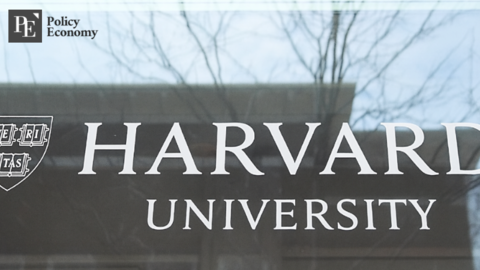Changing Horizons: Why Indian Students Are Turning Away from Traditional Study Destinations
Input
Modified
A Sharp Decline in Traditional Destinations The Rise of New Study Hubs Shifting Priorities and Student Mindsets

A Sharp Decline in Traditional Destinations
In 2024, the number of Indian students who pursue higher education abroad has experienced a substantial decrease, with official figures indicating a 15% decrease from the previous year. In 2024, 759,064 Indian students traveled abroad for education, a significant decrease from the 892,989 students who traveled abroad in 2023, as per data from the Bureau of Immigration (BoI), Ministry of Home Affairs.
Although studying abroad remains an aspirational objective for numerous Indian students, this decline has been influenced by significant global and national factors. The most substantial decrease has been observed in Canada, where Indian student enrollments decreased by 41% from 233,532 in 2023 to 137,608 in 2024. This significant transformation is primarily due to the escalating diplomatic tensions between India and Canada, as well as the stricter visa policies and higher rejection rates. Allegations of Indian government involvement in the assassination of Sikh separatist Hardeep Singh Nijjar in Canada sparked the diplomatic rift in October 2023. Indian pupils were subjected to increased visa scrutiny and uncertainty as a consequence of the expulsion of diplomats from both countries.
In addition to Canada, the United States has also reported a 13% decrease in Indian student enrollments, with a decrease from 234,473 in 2023 to 204,058 in 2024. The depreciation of the Indian rupee against the U.S. dollar, concerns over the return of Donald Trump to office, and stricter visa regulations have made studying in the U.S. more expensive and challenging. The cost of tuition and living expenses was substantially increased as a result of the rupee's decline from INR 81.71 per US dollar in 2023 to INR 87.34 per dollar in 2025.
In contrast, the United Kingdom has experienced a even more severe decline of 28%, with student enrollments decreasing from 136,921 in 2023 to 98,890 in 2024. The UK's stricter student visa regulations, which prohibit international students from bringing family members unless they are enrolled in postgraduate research programs, are a significant factor contributing to this decline. Numerous Indian pupils have been discouraged from enrolling in educational institutions in the United Kingdom as a result of this policy modification.
Additionally, the number of Indian students in Australia has decreased by 12%, from 78,093 in 2023 to 68,572 in 2024. This reduction has been influenced by stricter entry requirements, higher visa fees, and concerns regarding housing affordability. Furthermore, the Australian government's international student cap, which restricts the number of new international student enrollments each year, has also contributed to the decline.

The Rise of New Study Hubs
Numerous alternative countries have experienced an increase in enrollments, despite the general decrease in the number of Indian students who travel to conventional destinations. Russia has emerged as a significant beneficiary, with a 33.7% increase in Indian student enrollments. This is particularly noteworthy. The number of Indian pupils in Russia increased from 23,503 in 2023 to 31,444 in 2024. The primary factors contributing to this expansion are the proliferation of academic partnerships between Indian and Russian universities, the relaxation of visa regulations, and the availability of affordable tuition fees.
In the same vein, Germany has emerged as a desirable destination for Indian pupils, with a substantial rise in enrollments. India has become the largest group of international students in Germany, surpassing China, as the number of Indian students studying in Germany increased from 20,684 in 2022 to 34,702 in 2024. The increase in enrollments is ascribed to the strong job market, affordable education, and post-study work opportunities in Germany.
The number of Indian pupils in France has also increased, from 6,406 in 2022 to 8,536 in 2024. The country's English-taught programs, favorable post-study work policies, and academic collaborations with Indian institutions have all contributed to this upward trend.
In addition to these, New Zealand has experienced a significant increase in student enrollments, jumping from 1,605 in 2022 to 7,297 in 2024. This increase can be attributed to the robust job market and the flexible visa regulations.

Shifting Priorities and Student Mindsets
The fundamental shift in student decision-making is reflected in the decline of conventional study destinations and the rise of alternative countries. The new generation of Indian students is no longer solely motivated by university rankings; rather, they prioritize **affordability, job prospects, and visa stability.
According to Maria Mathai, the proprietor of MM Advisory Services, students are currently adopting a more pragmatic approach to studying abroad. Rather than inquiring about the university's ranking, they now inquire about the salary they can anticipate upon graduation or the programs that guarantee employment rights regardless of any changes in immigration policies.
This transition is notably apparent in Germany, Russia, and France, where students are attracted to cost-effective education and stable post-study employment opportunities.
Students such as Garima Mathur, who is a resident of Chandigarh, Punjab and is preparing to pursue a degree in Italy, are of the opinion that global visa policies, affordability, and post-study employment opportunities are currently the most critical factors in selecting a destination.
Additionally, economic and political factors are also influencing student migration. For instance, Indian pupils in the United States are apprehensive about the potential modifications to H1-B visa policies that may occur under a potential Donald Trump administration. In the same vein, the post-study work period for international students in the United Kingdom remains ambiguous, rendering it a less appealing option for Indian applicants.
The availability of post-graduation job opportunities and part-time work is another critical factor that influences study-abroad decisions. Indian students are increasingly interested in countries such as Germany and New Zealand, which offer clear pathways to employment after graduation.
The 15% decrease in the number of Indian students who study abroad in 2024 represents a substantial change in global education trends. Although enrollments in "traditional destinations" such as Canada, the United States, the United Kingdom, and Australia are declining significantly, countries like Russia, Germany, and France are experiencing an increase in popularity as a result of their "strong labor markets," stable visa policies, and affordable education."
Universities and governments worldwide will be required to adapt to changing student priorities as Indian students continue to reevaluate their study options. Key determinants in the future of Indian student mobility will continue to be factors such as visa certainty, return on investment, and job security.





















